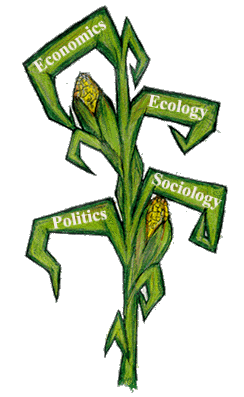In this past century agricultural technology has advanced by leaps and bounds to supply the developed world with a luxurious diversity of agricultural products and to keep the ever-increasing population of the developing world fed. These advances to increase yields are the zenith of a process that started with the dawn of agriculture over a thousand years ago. Now, instead of local farmers producing a variety of goods for local consumption, multinational corporations undertake in industrial monocropping for a world market, and locally produced goods are fast fading in the sands of time. To increase profits in the name of feeding the planet, the agriculture industry has turned to biotechnology, using the basic elements of our planet to synthesis everything from the soil for plants to grow in to the plants themselves. Biotechnology may become a tool unmatched by any other in human history. It allows for the manipulation, synthesis and eventual creation of genes. Genes are the encoded road map for any organism's development. Thus, by manipulating genes, agricultural corporations are able to engineer the plants they desire down to the "roots." To see a shocking list of some of the current crops that are modified genetically click here.
The agricultural industry's adoption of biotechnology has had and will continue to have a multitude of repercussions socially, ecologically, politically, and economically. These repercussions, depending on who you are listening to can be of a beneficial on degrading nature. Yet, for the most part, when you listen to those who are not making a profit on the proliferation of genetically modified organisms (GMOs) in agriculture, the collective consensus is one directed against the increased use of GMOs in industrial agriculture. The costs of GMO use in agriculture range from the loss of valuable biodiversity ecologically, the degradation of public health socially, the increase of irresponsible international trade economically, and the pollution of the truth politically. To learn more about both the cost and benefits of the proliferation of GMOs in the agricultural industry socially, economically, politically, and ecologically access each section below.

